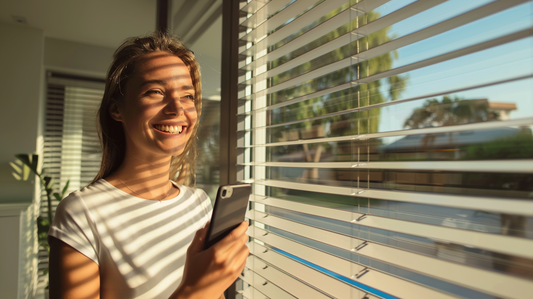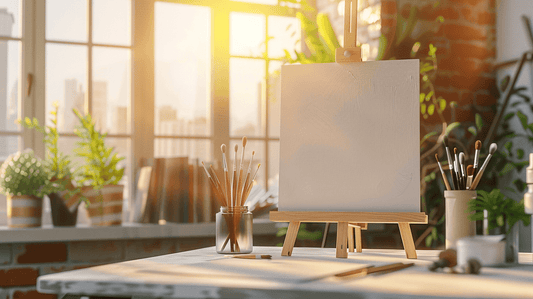Soft pastels are a versatile and vibrant medium that have captivated artists of all levels for centuries. Whether you're new to the world of art or looking to expand your creative horizons, mastering soft pastels can unlock a world of possibilities. In this comprehensive guide, we'll take you on a journey, providing essential techniques and practical tips to help you develop your skills and create stunning works of art. Whether you dream of painting breathtaking landscapes, capturing the beauty of nature, or expressing your inner emotions through color, this guide is your roadmap.
Getting Started: Understanding Soft Pastels
Soft pastels are a beloved medium among artists for their vibrant colors, velvety texture, and expressive capabilities. In this section, we'll delve into the fundamentals of soft pastels to help you gain a solid understanding of this versatile medium.
What are Soft Pastels?
Soft pastels are sticks of pigment held together by a binder, typically made from gum arabic or gum tragacanth. Unlike oil or acrylic paints, which use liquid binders, soft pastels contain minimal binder, allowing for rich, intense colors. Their soft, chalk-like consistency allows them to be easily blended and layered on various surfaces.
Types of Soft Pastels
Soft pastels come in various forms, including individual sticks, sets, and pencils. Individual sticks are available in a wide range of colors and are ideal for artists who prefer to select colors a la carte. Sets, on the other hand, come in pre-selected assortments, making them convenient for beginners and artists who enjoy working with a curated palette. Soft pastel pencils offer more precision and control, making them suitable for detailed work and sketching.
Characteristics of Soft Pastels
Soft pastels are known for their vibrant colors, high pigment concentration, and versatility. They can be applied directly to paper or other surfaces without the need for brushes or solvents, making them an excellent choice for artists who enjoy working spontaneously. Soft pastels can be blended with fingers, blending stumps, or brushes to create smooth transitions and subtle gradations of color. They also offer the ability to layer colors to achieve depth and richness in artwork.
Selecting Soft Pastels
When selecting soft pastels, consider factors such as color intensity, lightfastness, and texture. High-quality pastels will have strong pigmentation and excellent lightfastness ratings, ensuring the longevity of your artwork. It's also important to choose pastels with a soft, buttery texture that allows for smooth application and blending.
By understanding the basics of soft pastels, you'll be well-equipped to explore their endless creative possibilities and embark on your journey to soft pastel mastery.
Essential Tools and Materials
To create stunning artwork with soft pastels, it's essential to have the right tools and materials at your disposal. In this section, we'll explore the key items you'll need to get started with soft pastel art.
Soft Pastels
Soft pastels come in a variety of colors and qualities, ranging from student-grade to artist-grade. It's recommended to invest in artist-grade pastels for superior pigment concentration and lightfastness, which ensures the longevity of your artwork. Consider purchasing a set of soft pastels with a wide range of colors to provide versatility in your artwork.
Paper and Surfaces
Choosing the right paper and surface for your soft pastel artwork is crucial. Opt for heavyweight, textured paper or pastel paper specifically designed for soft pastels. These papers have a toothy surface that grips the pastel pigment, allowing for better adhesion and layering. Alternatively, you can use sanded pastel paper or boards for a smoother surface that allows for more detailed work.
Fixatives
Fixatives are used to seal and protect finished pastel artwork from smudging and fading. It's essential to use a fixative specifically formulated for pastels to prevent discoloration or altering of the colors. When applying fixative, be sure to do so in a well-ventilated area and follow the manufacturer's instructions carefully to avoid over-saturating the paper.
Blending Tools
Blending tools such as tortillons, blending stumps, or soft brushes are indispensable for soft pastel artists. These tools allow you to blend colors seamlessly, create smooth transitions, and achieve subtle gradations of color. Experiment with different blending techniques to find the one that works best for your artistic style.
Erasers
Erasers are handy for correcting mistakes and lifting unwanted pastel pigment from the paper. Kneaded erasers are ideal for gently lifting pigment without damaging the paper's surface, while vinyl erasers can be used for more precise erasing. Keep a variety of erasers on hand to address different types of mistakes effectively.
Workable Fixative
Workable fixative is a type of fixative that allows you to continue working on your pastel artwork even after applying a layer of fixative. This is useful for artists who prefer to work in multiple layers or who want to add additional details to their artwork after sealing it with fixative.
By gathering these essential tools and materials, you'll be well-prepared to embark on your soft pastel journey with confidence and creativity.
Basic Techniques: Handling and Blending Pastels
Mastering basic techniques for handling and blending pastels is essential for creating beautiful and expressive artwork. In this section, we'll explore some fundamental techniques that will help you achieve stunning results with your soft pastels.
Layering
Layering is a fundamental technique in soft pastel art that involves building up layers of color to create depth and richness in your artwork. Start by applying light pressure with your pastel stick and gradually add more layers to intensify colors and enhance contrast. Experiment with layering different colors to create dynamic and vibrant effects.
Blending
Blending is another essential technique for soft pastel artists. Use your fingers, blending stumps, or soft brushes to blend colors together seamlessly. Circular motions or gentle strokes can be used to soften edges and create smooth transitions between colors. Blending can help you achieve a more painterly and cohesive look in your artwork.
Cross-hatching
Cross-hatching involves creating a series of overlapping lines or strokes with your pastel sticks to build up texture and add interest to your artwork. This technique is particularly effective for creating detailed textures such as fur, grass, or fabric. Experiment with varying the direction, length, and density of your cross-hatching lines to achieve different effects.
Scumbling
Scumbling is a technique that involves lightly dragging your pastel stick across the surface of the paper to create a soft, diffuse effect. This technique is ideal for creating atmospheric effects such as clouds, mist, or soft shadows. Use a light touch and vary the pressure to control the intensity of the scumbled areas.
Sgraffito
Sgraffito is a technique where you use a sharp tool such as a palette knife or the edge of a pastel stick to scratch or etch into the surface of your pastel artwork. This technique can be used to create fine lines, add details, or reveal underlying layers of color. Experiment with different tools and pressures to achieve various textures and effects.
Impasto
Impasto is a technique borrowed from oil painting that involves applying thick layers of pastel pigment to create a textured, three-dimensional effect. Use your pastel stick or a palette knife to apply thick strokes of pastel directly to the paper, building up layers to create depth and dimension in your artwork. Impasto can add a dynamic and tactile quality to your pastel paintings.
By mastering these basic techniques for handling and blending pastels, you'll be well-equipped to explore the endless creative possibilities of soft pastel art.
Troubleshooting and Tips for Success
While working with soft pastels can be a rewarding and enjoyable experience, it's not uncommon to encounter challenges along the way. In this section, we'll address common issues that may arise during the pastel art process and provide tips for overcoming them to achieve success in your artwork.
Excessive Dust
Issue: Soft pastels can produce a significant amount of dust, which can accumulate on your artwork and create a messy appearance.
Solution: To minimize dust, work with a gentle touch and avoid over-layering pastel pigment. Consider using a fixative spray between layers to seal the pastel and reduce dust. Additionally, work on a vertical surface or use a fixative spray outdoors to prevent dust from settling back onto your artwork.
Muddy Colors
Issue: Over-mixing or blending too many colors together can result in muddy or dull colors in your artwork.
Solution: Use a light touch when blending colors to avoid over-mixing and maintain the vibrancy of your colors. Experiment with layering complementary or analogous colors to create depth and richness without muddying the overall appearance of your artwork.
Smudging
Issue: Soft pastels can easily smudge or smear, especially if not properly fixed or handled with care.
Solution: Allow your artwork to dry completely before handling or framing to prevent smudging. Consider using a workable fixative spray to seal your artwork between layers and protect it from smudging. When handling your artwork, use a clean sheet of paper or protective covering to avoid inadvertently smudging the pastel pigment.
Lack of Contrast
Issue: Insufficient contrast between light and dark areas can result in a flat or uninteresting appearance in your artwork.
Solution: Pay attention to the play of light and shadow in your composition and exaggerate contrasts to create visual interest. Use lighter colors for highlights and darker colors for shadows to enhance the three-dimensional quality of your artwork. Experiment with layering and blending techniques to achieve subtle variations in value and contrast.
Overworking
Issue: Continuously reworking or overworking your artwork can lead to a loss of freshness and spontaneity in your pastel paintings.
Solution: Work efficiently and decisively, avoiding the temptation to continuously rework areas of your artwork. Trust your instincts and embrace imperfections as part of the artistic process. Take breaks and step back periodically to assess your progress and make adjustments as needed, but avoid excessive tinkering that may compromise the overall integrity of your artwork.
As you continue your soft pastel journey, remember to embrace experimentation, practice regularly, and remain open to new techniques and approaches. Soft pastels offer endless possibilities for creative expression, and with dedication and persistence, you can continue to grow and evolve as an artist.
Whether you're captivated by the vibrant colors of a landscape, the emotive power of a portrait, or the subtle beauty of a still life, let your imagination guide you as you create art that speaks to you and resonates with others.



